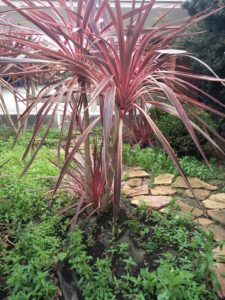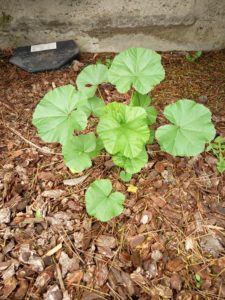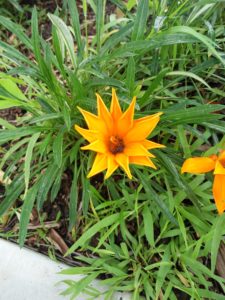by Benjamin Minch, Staff Writer

Cabbage Palm
Location at FVHS: By the english halls
Native to: New Zealand
Description: Being a drought tolerant plant, the Cabbage Palm can easily grow in the planters of Fountain Valley. It can grow up to 10ft, and usually has a lifespan of around 500 years. When first discovered by New Zealand natives, they used the leaves for textiles, fishing lines, sandals and baskets. It was a vital plant to their survival. Juice from the leaves can also be used to heal cuts and if boiled, it can be used to cure stomach flu. The Cabbage Palm is also rich in sugar, which provides a good food source, but I wouldn’t suggest eating them because they don’t taste very good (I have tried).

Malva Parviflora
Location at FVHS: Tucked away deep in the planter around the bowl
Native to: Europe
Description: Malva Parviflora is a weed at FVHS, which develops a long tap root making it almost impossible to remove. This plant has been known to affect the quality of chicken eggs if they feed on it because the leaves are toxic to most animals. It actually produces a cheese-shaped fruit as well, but I would also advise against eating this because it is in fact toxic.

Gazania
Location at FVHS: Planter by the library
Native to: South Africa
Description: Also known as a treasure flower, the Gazania is similar-looking to a daisy. Native Africans used to use this plant as a gift to relatives, especially dead ones. This flower is usually planted in order to shade the ground from the sweltering sun. Gazania can grow in terrible climates and drought, making it a very resilient plant to death. Don’t try and pull these flowers out of the ground because they are very important to our soil composition and health. (Also don’t eat it…for obvious reasons).





